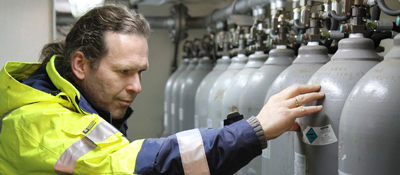Bereich Hafenstaatkontrolle
Brandstwiete 1
20457 Hamburg
Phone: Office Hours +49 40 361 37-297, 24h +49 40 361 37-100
Fax: +49 40 361 37-295
Mail: psc-germany@bg-verkehr.de

Mike Meklenburg
Phone: +49 40 36137-202
Mail: mike.meklenburg@bg-verkehr.de
Scope of inspections
Scope of the initial inspection
The program of a port state control inspection is obligatory: On all ships it starts with the initial inspection. This inspection begins already during boarding and includes a survey of the exterior condition of the ship. On board, inspectors briefly introduce themselves and discuss further procedures with the master. Next all required certificates and documents of ship and crew are verified. This is followed by a round which covers the bridge, the superstructures, the main deck, the accommodation and working area and the engine room. A „paper check“ alone is not sufficient. In case of serious findings a “more detailed inspection” will be carried out.
Expanded inspection of „high risk ships“ and „risk ship types“
In November 2002 the oil tanker „Prestige“ broke apart 250 km off the Spanish coast and caused a major oil spill along the coastline. Politicians reacted by tightening ship safety regulations and their stricter enforcement. Since 2011 „high risk ships“ as well as ships, older than 12 years and of a „risk ship type“ such as tankers, bulk carriers and passenger ships have been subjected to an „expanded inspection“. Ships which are classified as high risk ships because of their detected deficiencies in combination with a performance of the operator, flag state and classification society that is below-average are also subject to an expanded control.

Inspection during ferry operation
Roll on/Roll off (RoRo) ships carry cars, lorries or trains. The car deck (in most cases un-subdivided) and the large shell doors may in case of water ingress threaten the ship’s stability. Additionally, a fire on board can spread much faster because of the missing subdivision. Due to their high velocity, passenger high-speed ferries have a higher risk potential, too.
Therefore these two ship types are subject to a more stringent survey system, which includes inspections while in operation - rather than in port.

